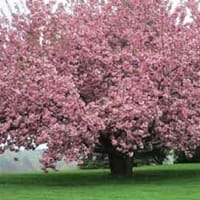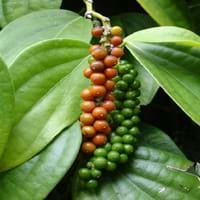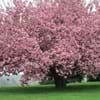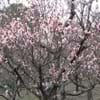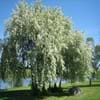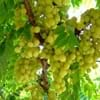Life Span
Annual and Perennial
Perennial
Type
Flowering Plants, Fruit, Tree
Broadleaf Evergreen, Vines
Origin
Hybrid origin
India, Indonesia, Southeast Asia, Southern Asia
Types
Not Available
Red pepper, Orange pepper
Number of Varieties
Not Available
Habitat
Bushlands, gardens, Homesteads, In desert grasslands, Lowland, Shady Edge, Tropical areas
Moist Soils, orchards, Temperate Regions
USDA Hardiness Zone
5-8
8-15
AHS Heat Zone
Not Available
12 - 1
Sunset Zone
Not Available
H1, H2, 8, 9, 14, 15, 16, 17, 18, 19, 20, 21, 22, 23, 24
Habit
Oval or Rounded
Clump-Forming
Minimum Width
Not Available
Flower Color
White, Pink
Lemon yellow
Flower Color Modifier
Bicolor
Bicolor
Fruit Color
Not Available
Red, Green, Light Green
Leaf Color in Spring
Green
Light Green, Dark Green
Leaf Color in Summer
Dark Green
Light Green
Leaf Color in Fall
Not Available
Light Green, Dark Green
Leaf Color in Winter
Not Available
Light Green, Dark Green
Leaf Shape
Ovate
Circular cordate
Plant Season
Spring, Fall
Spring, Summer, Fall, Winter
Sunlight
Not Available
Full Sun, Partial Sun, Partial shade
Type of Soil
Clay, Loam
Loam, Sand
The pH of Soil
Acidic, Neutral, Alkaline
Acidic, Neutral, Alkaline
Soil Drainage
Average
Average
Bloom Time
Summer, Late Summer, Early Fall
Not Available
Tolerances
Not Available
Drought
Where to Plant?
Ground
Container, Ground
How to Plant?
Seedlings, Stem Cutting
Seedlings, Stem Planting, Vegetative Reproduction
Plant Maintenance
Medium
Medium
Watering Requirements
Keep the ground moist but not water-logged, Requires watering in the growing season
Do Not over Water, Sprinkle water over foliage, Water every two or three days during warmer months
In Summer
Lots of watering
Lots of watering
In Spring
Moderate
Moderate
In Winter
Average Water
Average Water
Soil pH
Acidic, Neutral, Alkaline
Acidic, Neutral, Alkaline
Soil Type
Clay, Loam
Loam, Sand
Soil Drainage Capacity
Average
Average
Sun Exposure
Full Sun, Partial Sun
Full Sun, Partial Sun, Partial shade
Pruning
Prune prior to new growth, Remove deadheads, Shape and thin as needed
A hard prune may be necessary if the plant becomes woody, Remove dead branches, Trim each shoot back to the first set of leaves
Fertilizers
Organic Manure
10-10-10 diluted liquid fertilizer, All-Purpose Liquid Fertilizer, Do not let fertilizers touch the leaves
Pests and Diseases
Aphids, Mealy bugs, Mites
Aphids, Beetles, Root rot, Rust, Scab
Plant Tolerance
Not Available
Heat Tolerance, Humidity, Salt and Soil Compaction
Flowers
Showy
Not Available
Flower Petal Number
Semi-Double
Single
Foliage Texture
Medium
Medium
Foliage Sheen
Matte
Matte
Attracts
Not Available
Aphids, Leafminer, Snails, Squirrels
Allergy
no allergic reactions
Oral Allergy
Aesthetic Uses
Ornamental use, Showy Purposes
Beautification, Cottage Garden, Decorating walls
Beauty Benefits
Not Available
Acne, Blackheads
Environmental Uses
Air purification
Fixes Nitrogen, Insect Repellent
Medicinal Uses
No Medicinal Use
Acid Reflux, Dysentry, Healthy teeth, Inflammation, Oral health
Part of Plant Used
Flowers, Fruits
Dried seeds
Other Uses
Culinary use, Showy Purposes, Used as Ornamental plant
Culinary use, Oil is used for aromatherapy, Used in herbal medicines
Used As Indoor Plant
No
Yes
Used As Outdoor Plant
Yes
Yes
Garden Design
Feature Plant, Shade Trees, Street Trees
Container, Feature Plant, Hedges, Screening / Wind Break, Tropical
Botanical Name
PRUNUS 'Hally Jolivette'
Piper nigrum
Common Name
Flowering Cherry, Hally Jolivette Flowering Cherry
Peppercorn, Piper, Black pepper
In German
Blühende Kirsch
Pfeffer
In French
cerisier
Piper nigrum
In Spanish
floración de la cereza
Poivrier noir
In Greek
Άνθιση κερασιών
μαύρο πιπέρι
In Portuguese
cereja de florescência
Pimenta-preta
In Polish
Kwitnienie wiśni
Pieprz czarny
In Latin
florentem cerasis
nigrum piperis
Phylum
Tracheophyta
Magnoliophyta
Class
Magnoliopsida
Magnoliopsida
Family
Rosaceae
Piperaceae
Clade
Angiosperms, Eudicots, Rosids
Angiosperms, Monocots
Tribe
Not Available
Not Available
Subfamily
Amygdaloideae
Not Available
Number of Species
Not Available
Season and Care of Flowering Cherry and Black pepper
Season and care of Flowering Cherry and Black pepper is important to know. While considering everything about Flowering Cherry and Black pepper Care, growing season is an essential factor. Flowering Cherry season is Spring and Fall and Black pepper season is Spring and Fall. The type of soil for Flowering Cherry is Clay, Loam and for Black pepper is Loam, Sand while the PH of soil for Flowering Cherry is Acidic, Neutral, Alkaline and for Black pepper is Acidic, Neutral, Alkaline.
Flowering Cherry and Black pepper Physical Information
Flowering Cherry and Black pepper physical information is very important for comparison. Flowering Cherry height is 180.00 cm and width 240.00 cm whereas Black pepper height is 180.00 cm and width Not Available. The color specification of Flowering Cherry and Black pepper are as follows:
Flowering Cherry flower color: White and Pink
Flowering Cherry leaf color: Green
Black pepper flower color: Lemon yellow
- Black pepper leaf color: Light Green and Dark Green
Care of Flowering Cherry and Black pepper
Care of Flowering Cherry and Black pepper include pruning, fertilizers, watering etc. Flowering Cherry pruning is done Prune prior to new growth, Remove deadheads and Shape and thin as needed and Black pepper pruning is done A hard prune may be necessary if the plant becomes woody, Remove dead branches and Trim each shoot back to the first set of leaves. In summer Flowering Cherry needs Lots of watering and in winter, it needs Average Water. Whereas, in summer Black pepper needs Lots of watering and in winter, it needs Average Water.
